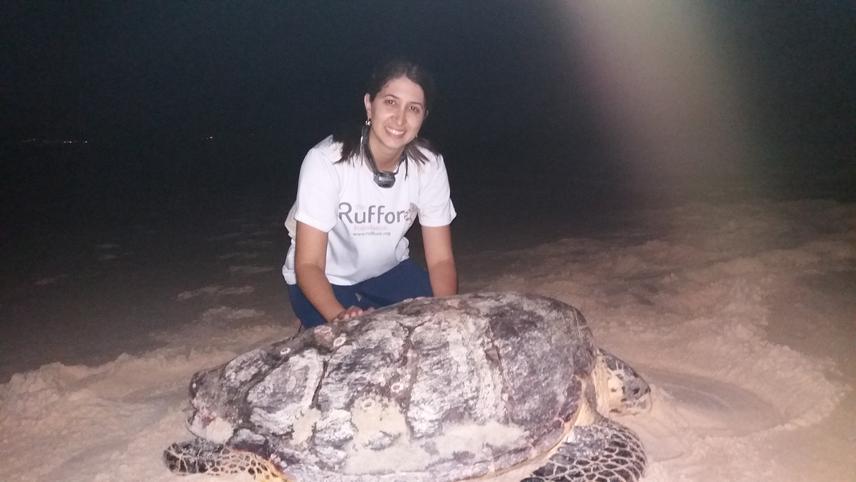Thyara Noely Simões
The hawksbill sea turtle (Eretmochelys imbricata) is a critically endangered species that periodically migrates across the Atlantic Ocean, from beaches of birth to the feeding grounds. Although several ecological aspects have already been assessed for this species, little is known about their migration patterns to date. We intend to investigate the trajectory patterns of hawksbill turtle populations hatched in northeastern Brazil using genetic tools, aiming to estimate their migration routes. Tissue sample of 600 individuals will be collected from different nesting beaches along 110km2 of the Brazilian coast, and their haplotype composition will be assessed using mtDNA analyses.

Since the beginning of the 20th century, the hawksbill turtles (Eretmochelys imbricata) had been decimated by human hunting, turning species to be classified as globally endangered, according to the IUCN red list. Sea turtle periodically migrates across the Atlantic Ocean, from beaches of birth to the feeding grounds feeding sites comprise important genetic reservoirs, since these areas receive populations from several beaches. Genetic information collected from individuals in their areas of birth, such as haplotypes of mtDNA, can be very important for enhancing our understanding on the migration patterns. We intend to investigate the trajectory patterns of the hawksbill turtle populations born in northeastern Brazil through genetic tools, aiming to estimate their migration routes.
The project will be conducted on 13 beaches where hawksbill turtles are nesting, spanned across six municipalities from six distinct states along the northeastern Brazilian Atlantic coast ─ Bahia, Alagoas, Pernambuco, Paraíba, Rio Grande do Norte and Piauí. Several studies directed towards the protection of sea turtles have been conducted in all these municipalities, yet no study on the genetic structure and migratory routes have been developed. Because many of these coastal areas consist of urban areas characterized by the presence of luxurious houses, hotels and resorts, a high impact of tourism occurs in these beaches. The field work will be conducted during the reproductive cycle of the hawksbill turtle, a total of 110 km² along the coast will be visited, and each beach will be daily monitored. The team will search for turtle nests, the located nests will be marked, georeferenced and isolated for a period of 45 to 60 days, until they hatch. On each area, all nests will be firstly identified and then 50 will be randomly selected to obtain biological samples of tissue fragments. In the laboratory, the DNA will be extracted using a specific genomic DNA kit and fragments of the mtDNA control region will be amplified to obtain the already sequenced haplotypes of the hawksbill turtles feeding on the Atlantic Ocean grounds, we will assess the GenBank database and search for all available haplotypes. These encompass haplotypes sequenced from some islands and beaches of Brazil. This comparison will allow the detection of the haplotype composition of each region of birth and their migration, according to the feeding area. This analysis will, therefore, estimate the potential migration route of each individual.